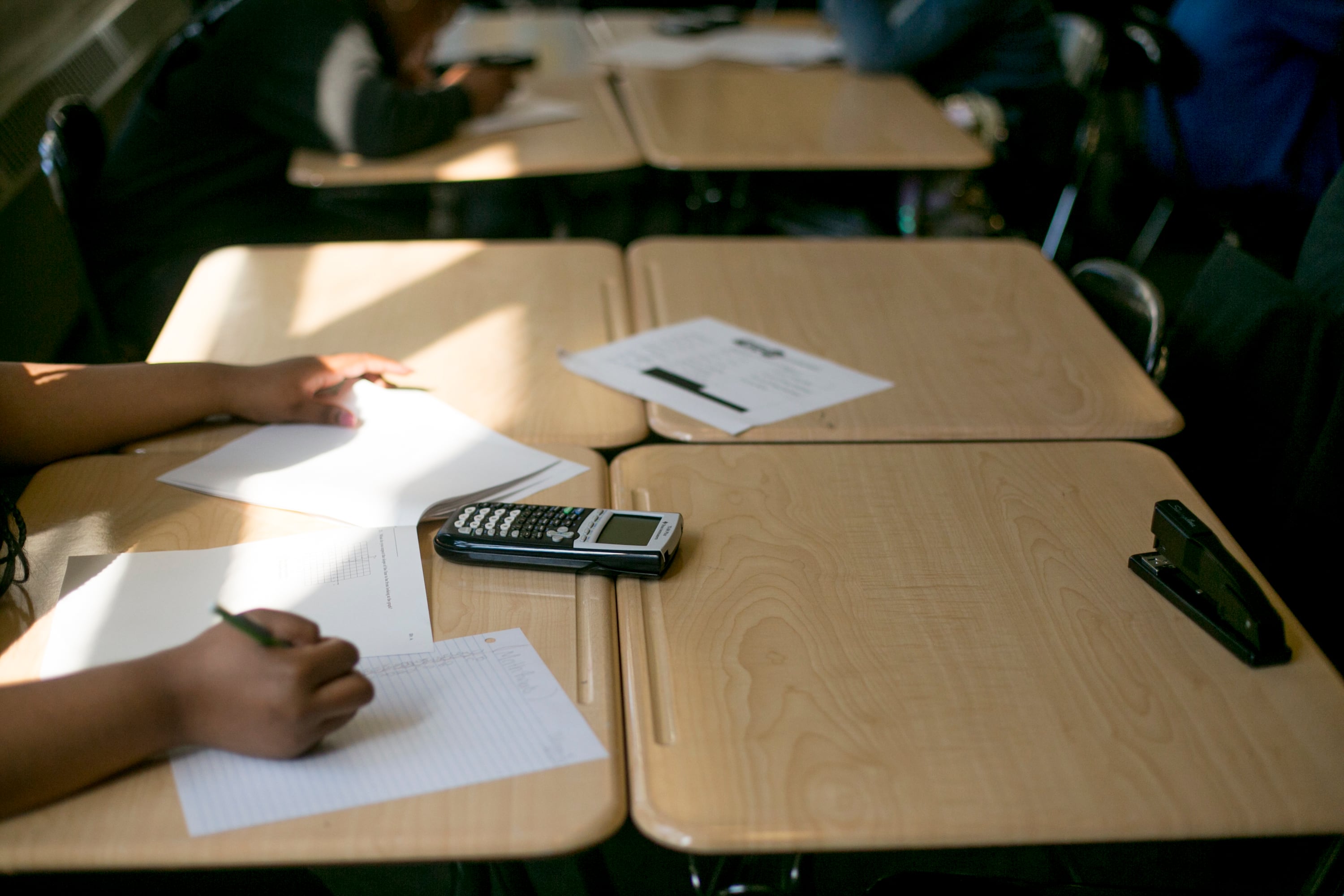As education officials had warned, Indiana elementary and middle school test scores plunged this year, with only a fraction testing proficient in English and math, much fewer than two years ago.
Results of the annual ILEARN state tests released Wednesday show that 28.6% of students statewide in grades 3 through 8 tested proficient in both English and math. In 2019, the last time the test was given, 37.1% passed.
In Indianapolis Public Schools, which has a high proportion of students from struggling families, only 10% showed proficiency in both English and math.
Last spring, states debated whether testing students amid a pandemic was fair to them and schools. Indiana decided to test, and required even students learning remotely to take the annual standardized exams in person— though state lawmakers won’t punish schools for the results.
The results highlight the uneven toll that the pandemic and economic shutdown have exacted, hitting students of color and those from low-income families particularly hard. That in turn has left a wide chasm in performance between those students and their wealthier peers.
Gaps persist among racial, ethnic, and socioeconomic groups. Only 8% of Black students in Indiana passed both the English and math sections, compared with 46.5% of Asian students, 34.7% of white students, and 15.6% Hispanic students.
In Indianapolis Public Schools, only 4% of students who receive subsidized meals — a proxy for poverty — passed both English and math tests, compared with 21.3% of students who pay for meals.
Educational, economic, and health hardships weighed down students in the past year and a half. Schools closed, then reopened, only to close again. Quarantines sent home teachers and students, schedules fluctuated, and students struggled to gain steady internet connection and follow virtual instruction.
For those reasons, the Indiana State Department of Education cautioned against comparing 2020-21 test scores with 2018-19 ones, the last year that the state administered standardized tests. With federal permission, Indiana cancelled the exams in 2020 because of the pandemic.
“It’s not a fair comparison because students are in a different situation than they were in 2019,” said Holly Lawson, the deputy director of communications for the state education department.
Comparing years “would overlook the significant academic impacts we’re seeing among student groups, which are deeper than total proficiency,” she wrote.
Previously the state had issued each public school a letter grade that it believes reflects its performance. For reasons originally unrelated to the pandemic, Indiana has not used test scores to grade schools for two years. This year, it will replace grades with “null” or “no letter grade,” because of the disruption caused by the coronavirus.
By some measures, high schoolers appear not to have lost as much learning as elementary students did.
That’s because younger kids aren’t learning as independently as are older kids who mostly know how to read on their own.
“For the early grade kids, unless you’ve got a parent or grandparent helping you out and reading to you, it’s harder to learn independently for younger kids,” said Andrew Ho, an education professor and testing expert at the Harvard Graduate School of Education.
He and other educational researchers also had predicted larger drops in math than in reading, which test scores show.
He attributes that to the accessibility of reading at home.
“Reading is something you can do at home. It’s not like I get together with my daughter and talk about math problems over dinner. And that’s typically why we expect to see both greater increases in math scores when there are school interventions and improved curricula, and greater declines when they are absent.”
Ho believes school districts should be holding summer academies, designing individual tutoring that focuses on acceleration not remediation, and measuring the need for mental and social and emotional support for students.
Wayne Township, where less than 11% of students passed both math and English, has put together plans to address what test scores highlighted.
Besides supporting all students, and providing some additional help, officials said in a statement, “We will closely monitor student progress and work to accelerate learning and address gaps caused by the pandemic.”
The low test scores have educators worried, not just about their students but also about public perception.
“I know that there’s a lot of nervousness that this will immediately turn into a reflection of district schools or teachers, and nobody wants that to happen until we’ve had a chance to really dive down,” into the data, said Marianne Perie, an education consultant.
She said state officials are holding off on comparisons. “We are trying to say that it’s not a normal comparison of apples and oranges,” said Perie, president of Measurement in Practice, LLC. “There’s a lot of research that needs to be done before we can truly understand these scores.”







